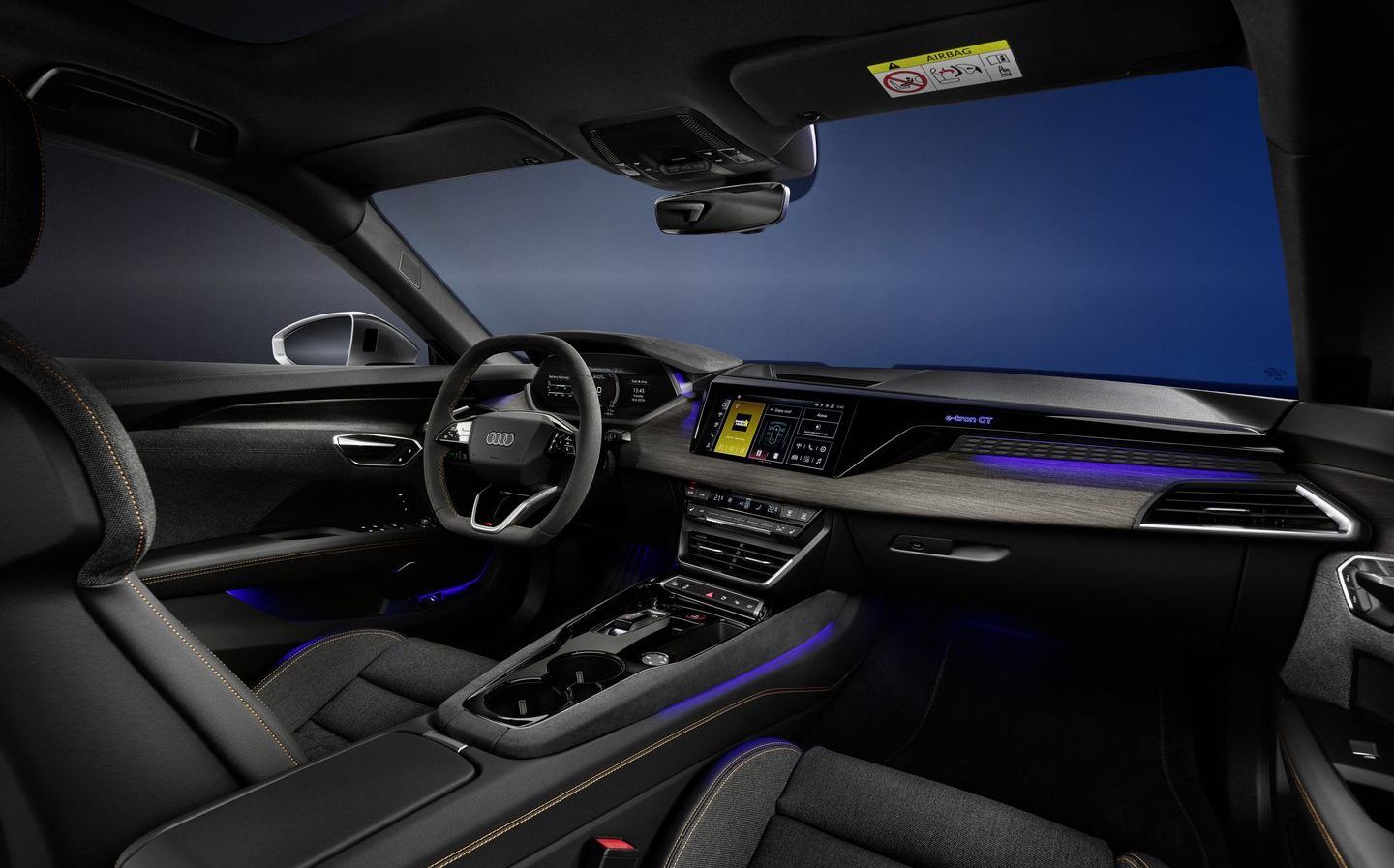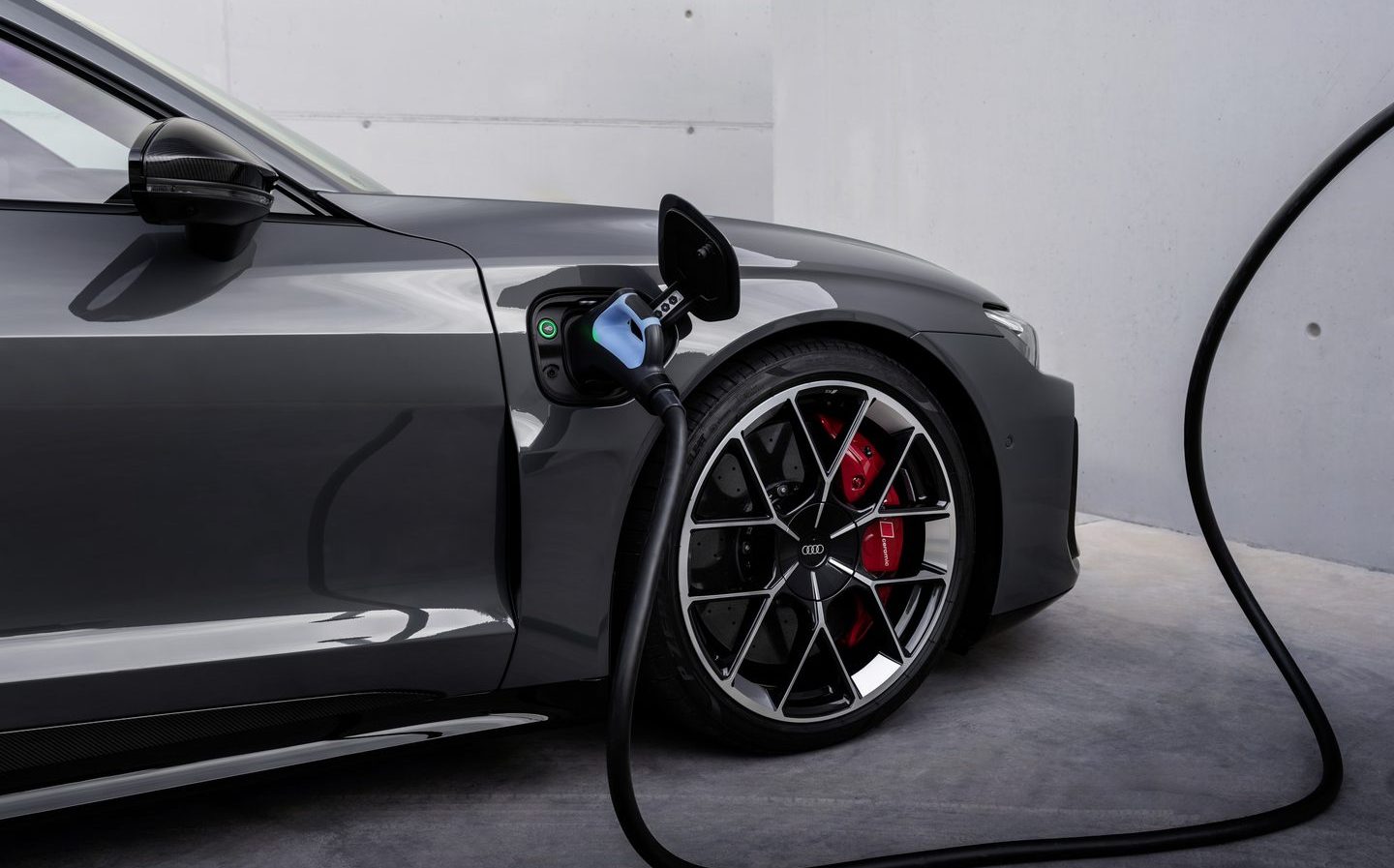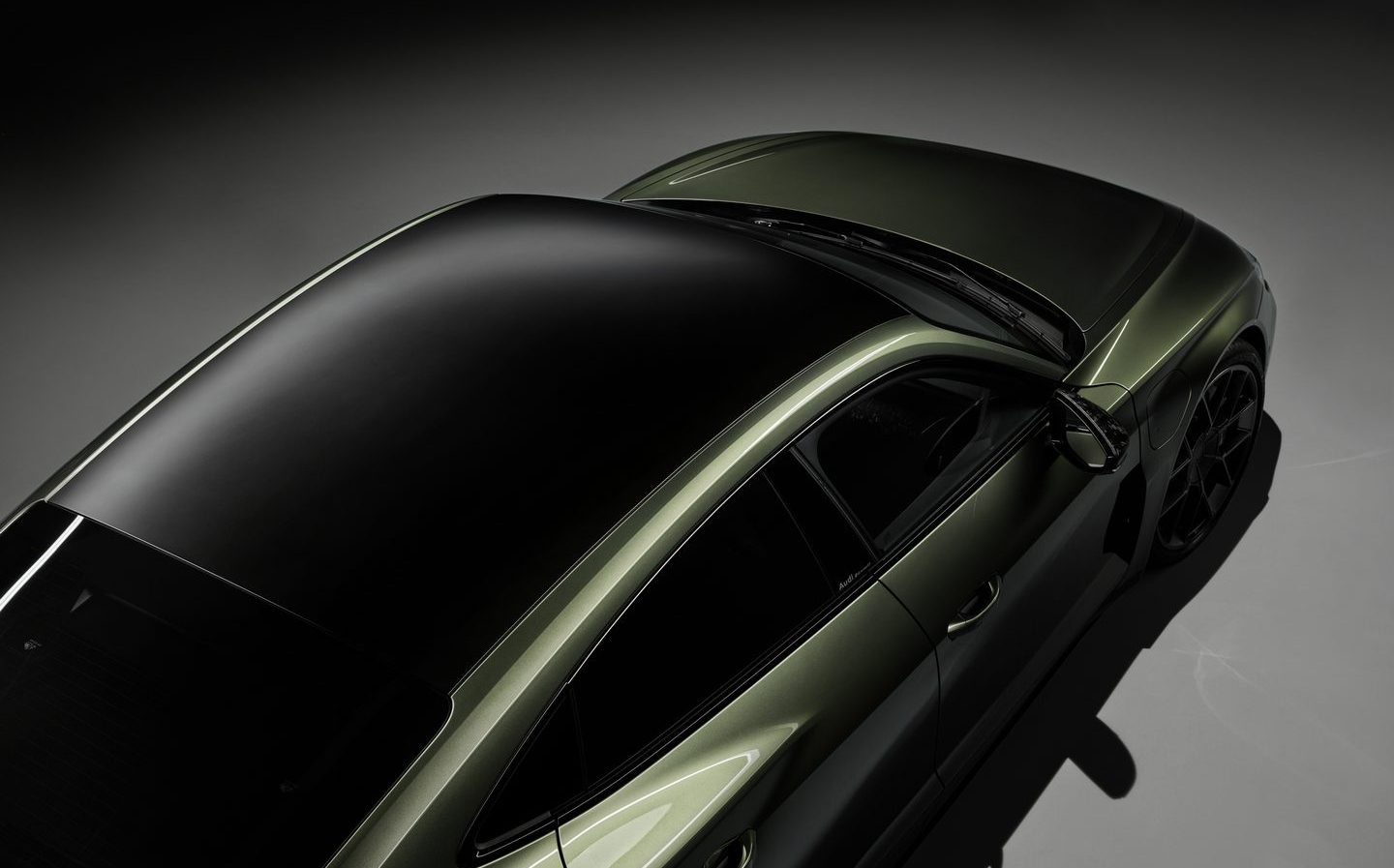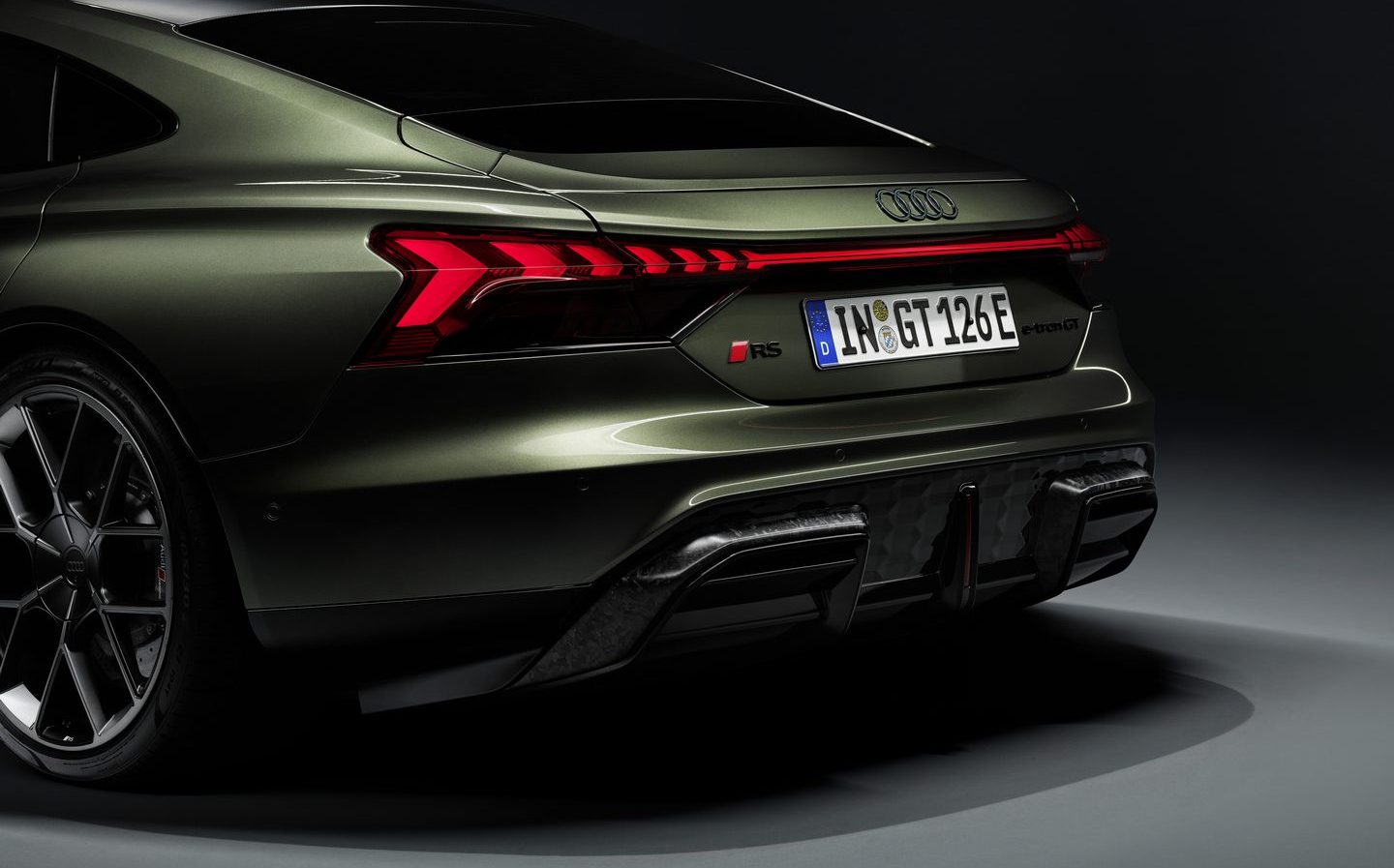Audi e-tron GT refreshed, becomes most powerful production Audi ever with 912bhp
Most powerful production Audi ever
A new Audi e-tron GT has been revealed with a range of revisions, both visual and technical, that are designed to keep it competitive in the ever-changing EV (electric vehicle) landscape.
The updates follow those for the Porsche Taycan, with which the e-tron GT shares underpinnings, and are designed to boost the appeal of Audi’s flagship EV, three years on from its original launch.
Three-strong model line-up

There’s a revised model line-up, with the entry point to the range being the newly-named S e-tron GT. This features a redesigned nose, with a black surround added to the ‘Singleframe’ grille, along with a new Audi badge and 3D-embossed detailing.
The front bumper has a new look with L-shaped sections designed to improve airflow around the car’s nose. There’s a similar design at the rear, plus an enlarged diffuser to help with aerodynamic efficiency.
Power for the S variant, like all e-tron GTs, comes from a two-motor set-up for quattro four-wheel drive, though it has a new front motor and revised power electronics that boost performance and efficiency. The S model produces up to 670bhp, which is good for a 0-62mph time of 3.4 seconds and a top speed of 152mph.

Next in the range is an update to the existing RS e-tron GT. This features a honeycomb grille design and a unique front bumper, while the rear end now has a central vertical reflector in the diffuser, in a nod to the lighting used by Audi’s endurance racing cars.
Elsewhere, there are new alloy wheels on offer, including a 21in six-spoke forged alloy design inspired by the wheels used on the Audi Avus concept from 1991.
The RS’s two-motor set-up receives a power boost over the S, with a maximum of 844bhp on tap and a 0-62mph time quoted at a face-stretching 2.8 seconds. Top speed is electronically limited to 155mph.
New Performance model
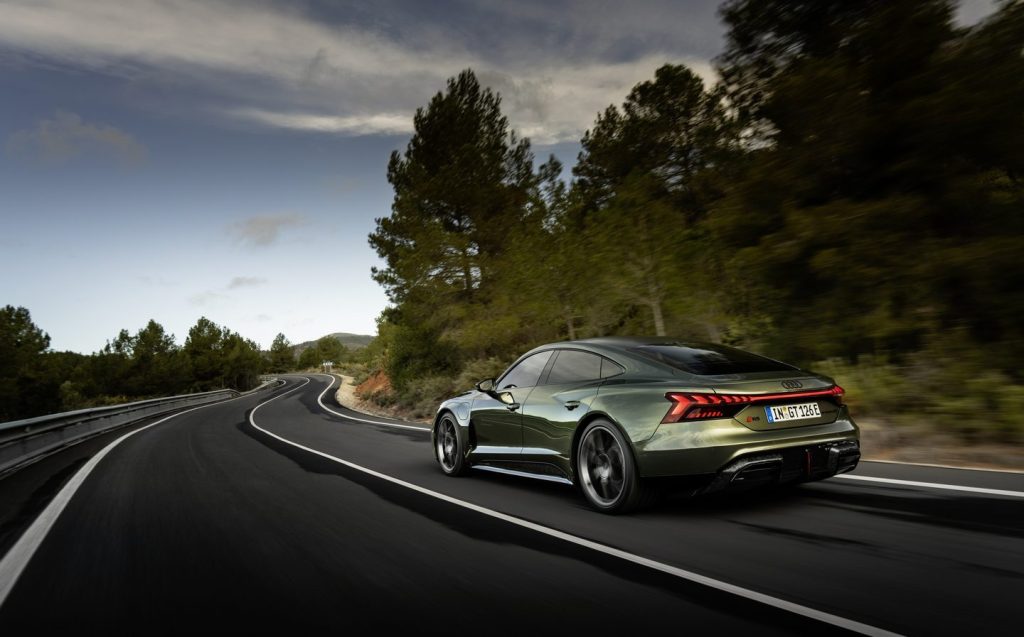
Amazingly though, that’s not the quickest Audi e-tron GT. At the top of the range, the RS e-tron Performance is the first electric model to gain Performance badging. This is the most powerful production Audi ever built, with 912bhp on offer, and a 0-62mph time of just 2.5 seconds.
It’s also the first Audi to feature ‘Carbon Camouflage’ trim, with exterior details picked out in the new material, while it also comes with a matte carbon fibre roof.
Active suspension on offer
The new e-tron GT features revised suspension with two-stage adaptive air suspension fitted as standard, while active suspension will be available as an option. This is designed to keep the car level during hard cornering, acceleration and braking, while helping to iron out bumps when cruising.

The car’s four-wheel-steering system has been revised for improved agility, there are bigger steel brake discs and the RS models will also be offered with the option of a tungsten carbide coating for improved stopping power over prolonged periods – a feature offered by Porsche for a number of years now.
Oddly, Audi hasn’t confirmed the new e-tron GT’s range figures in detail, other than to say that up to 378 miles will be possible on a charge. That presumably varies by model and equipment fitted, including wheel size, and real world range is likely to be less than the official figure — especially in the UK, which is usually colder than the 23C of the WLTP lab conditions.
It does have a chunky battery, though: capacity stands at 105kWh with 97kWh of that usable. And improved energy density and management software means the pack should be more efficient than the outgoing car’s.
Maximum charging speeds have increased to 320kW, which is pretty much as fast as it gets at present, and Audi says that a powerful enough DC rapid charger (at motorway services, for example) will be able to recharge the battery from 10-80 per cent capacity in as little as 18 minutes.
Audi has also improved the energy recovery system, allowing more power to be fed back into the battery under deceleration.

Subtle interior enhancements
In the cabin, the “Virtual Cockpit” digital driver’s display will be able to show more information regarding the status of the battery, including the pack temperature and real-time charging speeds when the car is plugged in.
The other cabin updates are more subtle, but microsuede is used in 37 to 45 per cent of the cabin, while recycled materials also feature prominently. The carpets are made from 100 per cent recycled nylon, for example, while the upholstery makes use of secondary materials, too.
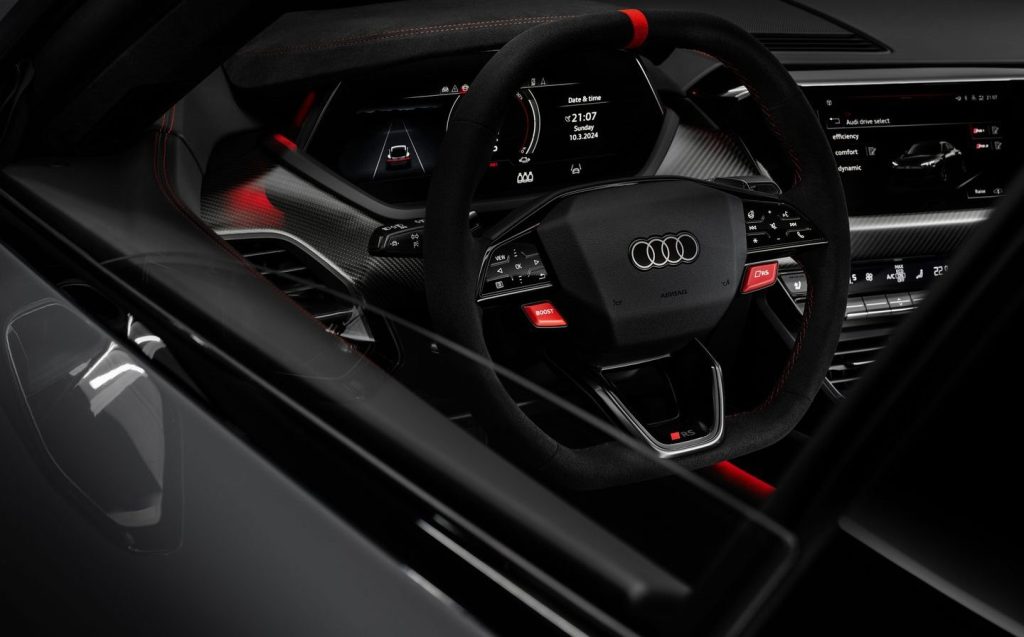
Other interior updates include a new steering wheel that’s flat on the top and bottom, while an optional panoramic glass roof is available with a liquid crystal layer that can go from clear to opaque in four stages at the touch of a button.
Prices for the new Audi e-tron GT have yet to be announced but are likely to see an increase over the outgoing car, which costs from £88,365 OTR, when they’re revealed later in the year.
Related articles
- If you found news on the updated Audi e-tron GT interesting, you may want to read our review of a prototype of the updated Audi S3
- You might also like to read our review of the BMW M3 Touring
- Have you seen the interior of the 2024 Audi Q6 e-tron?
Latest articles
- Watch new Porsche 911 GT3 smash Nürburgring record for manual cars
- Skoda Elroq 2025 review: Czech carmaker can’t seem to miss with its electric family cars
- Five best electric cars to buy in 2025
- Should I buy a diesel car in 2025?
- F1 2025 calendar and race reports: The new Formula One season as it happens
- Zeekr 7X AWD 2025 review: A fast, spacious and high tech premium SUV — but someone call the chassis chief
- Denza Z9GT 2025 review: Flawed but sleek 1,062bhp shooting brake from BYD’s luxury arm
- Extended test: 2024 Renault Scenic E-Tech review
- Best-selling cars 2025: The UK’s ten most popular models of the year so far



